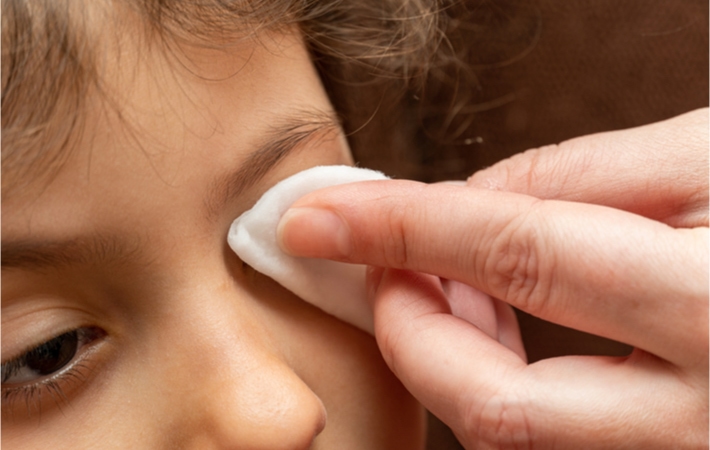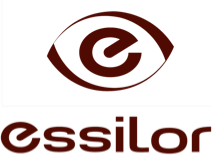We all know the feeling–that unshakeable sensation of having something in your eye. Sometimes a couple of good blinks can solve the problem, but other times, it can be a prolonged, unpleasant experience.
Foreign objects in the eye are typically the following items:
- Eyelashes
- Contact lenses
- Mucus
- Dirt
- Sand
- Dust
- Metal particles
- Glass particles
- Makeup
When a foreign object enters the eye, it may cause significant pain and irritation to the cornea and eyelid, and it’s essential to provide swift treatment as safely as possible. Delaying treatment could result in an eye emergency, so make sure you take care of the problem right away.
At Eye Care Group, we want to ensure our patients have all the right tools and techniques to remove something from their eye, and know when to seek professional care. Healthy eyes are happy eyes, and you deserve to feel comfortable all day, every day.
If you have something stuck in your eye, and need advice on finding relief, contact our experienced and compassionate team. We’re ready to help!
Take a Deep Breath
It can be challenging and stressful when your vision is blurred or irritated. When there’s something in your eye, it’s easy to panic, move too quickly, and make damaging mistakes.
Remain calm, and remember:
- Do not use your nails to remove the debris from your eye.
- Wash your hands before touching your eyes.
- Rubbing your eyes excessively can cause additional problems, like a corneal abrasion.
Tools of The Trade
When you have something stuck in your eye, don’t panic! Stop for a moment, and look around for items that may help you remove the object. Gather these objects and find a suitable workspace for the task, like a table or a counter.
You may already have a few of these objects at home, and some can be purchased at the drug or grocery store. Buying a few of these items in advance can help you create a toolkit, so you’re prepared for next time:
- A fluff-free face cloth
- Cotton swabs
- Saline solution or eye drops
- A mirror
- Bright lights
- An eye wash cup
Planning ahead, and purchasing these items to keep in your medicine cabinet may save you from having to gather them up in the future.
If you’re sensitive about objects being close to your eyes, it may help to call a friend or family member to assist. (You can’t keep them in the medicine cabinet, though).

Removing the Object
Once you’ve gathered the right tools, it’s time to get down to business:
- Wash your hands with soap and water
- Moisten the cotton swab with saline solution or eye drops
- Stand in front of a mirror in a brightly lit area
- Carefully examine your affected eye
- Using clean, dry hands, gently open the eye
- Look closely for debris
- If you see the particle or object, use the moistened cotton swab to gently dab at the object
- Remove the object carefully from your eye using the cotton swab
- If the object doesn’t dislodge, try using eye drops or a saline solution. Additional moisture to the eye may create enough liquid to move the object, allowing you the opportunity to blink it out
- If you’re still having difficulties, use an eyewash cup with saline solution or eye drops to rinse the foreign object from your eyes. Remember to blink and move your eyes while rinsing!
Foreign Objects in The Upper or Lower Eyelids
It can be a little trickier to remove an object stuck in your upper or lower eyelids.
- Upper eyelid: Gently pull the upper eyelid down with clean, dry hands. Then, move your eyes around inside the lid. These movements can help dislodge the particle stuck under the eyelid.
- Lower eyelid: Carefully pull the lower eyelid downward with clean, dry hands. Look down while gently wiggling the lower eyelid back and forth until the debris has been dislodged.
These tips can help you move the debris to a more visible area of your eye. Once you can see it, follow the steps mentioned above to remove the object.
The Importance of Handwashing
Yes, you know how important it is to wash your hands, especially in this day and age. We don’t mean to nag, but vision is one of the most vital senses, and touching your eyes with unwashed hands can result in various infections, like conjunctivitis (the dreaded pink eye!).
Protect your eyesight and visual health; make sure you wash and dry your hands before attempting to remove a foreign object from your eye.
Contact a Professional
If you’ve followed the above steps, and can’t seem to remove the particle from your eye, it’s time to seek professional assistance. Contact your optometrist if:
- Your eyes continue to feel irritated and uncomfortable
- You suspect the foreign object is still in your eye
- You think there are scratches or tears on the surface of your eye
- Your eye is still red, inflamed, and swollen hours after the removal
- You are experiencing blurred or distorted vision
Reach out to Eye Care Group if you cannot remove a foreign object from your eye. Our friendly team of experts is ready to offer high-quality assistance and relief!
Please proceed to the nearest urgent care centre if you require assistance with foreign object removal outside our regular business hours.




